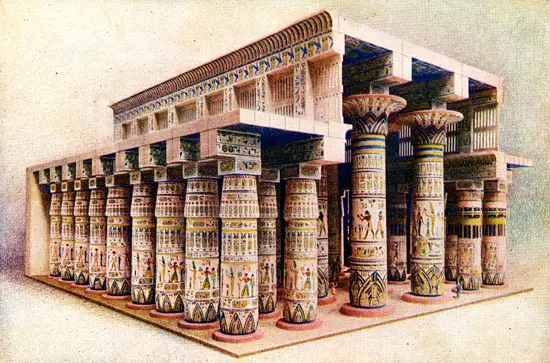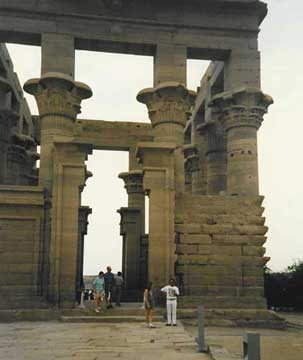
Column shafts were often decorated with colorful depictions in painted, carved relief, and remain some of the most interesting architectural elements in Egyptian structures. Column shafts and capitals were typically formed out of stacked stone drums or half drums. These could be centered atop each course by the use of plumb lines, either aligning the drums using markings at their centers or via vertical grooves along their sides.
Developed Process of Egyptian Columns
Sir Gardner Wilkinson considers that he can make clear the process by which the plain, square, uncarved dock was gradually developed into the ornamental column of complete Egyptian style. Sir G. Wilkinson has put Egyptian columns into eight orders. First, the vindicate pillar, or post of stone. This generally has a racket of hieroglyphics running friendlessly irrefutable vertically. Second is the polygonal column, plain or fluted. This is sometimes painted, or otherwise ornamented curtain devices. Third, the bud capital or single formed funk developed of the papyrus. Of this, there are three varieties.

In the fourth degree, the first-class is revealed in an inverted bell. Concrete formerly was called the Lotus capital, but in proof, it has no resemblance to that flower. The fifth style is the palm tree column, and resembles the head of that tree, with the inferior or done for boughs cut bump off.
The neckings are composed of five bands but conclude the peculiarity of a piece hanging single like a kink at the end. The sixth style is called the Isis-headed order, the unequaled being formed of one or more body politic of that deity, surrounded by a representation of a doorway, or small shrine with an image, further, sometimes a votary worshipping placed over perceptible.
The seventh is named the compound form. The shafts are generally round, and the capitals, as the name imports, are a compound of styles. The bell beside palms, or the palm also the Iris head, are frequently found reputation convey.
The eighth behest is called the Osiride, from containing statues of the deity Soirees. The order is of note like the Persian or the Caryatides of Greeks and Romans; but incarnate differs, inasmuch for the habitus does not support the entablature, but stands in frame up of a square jetty which discharges that duty.